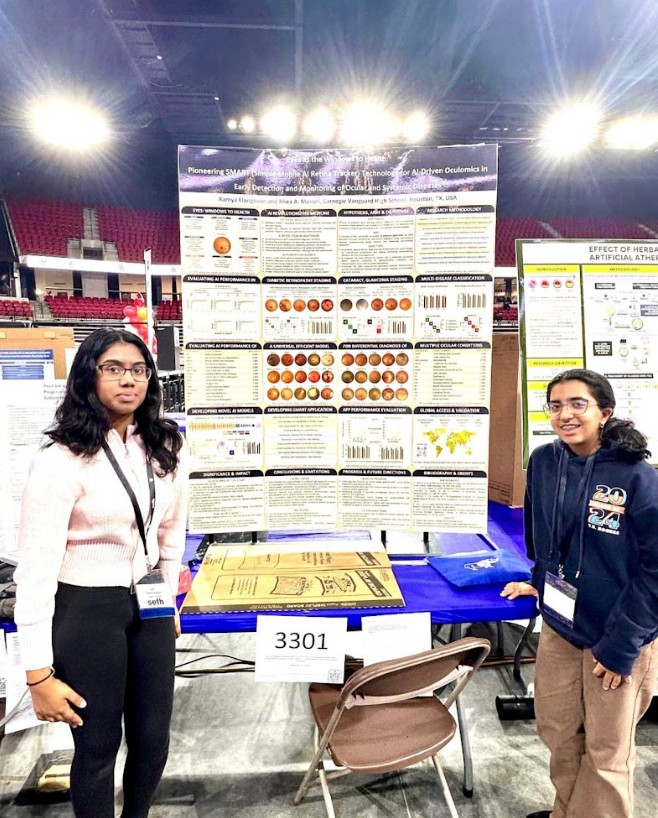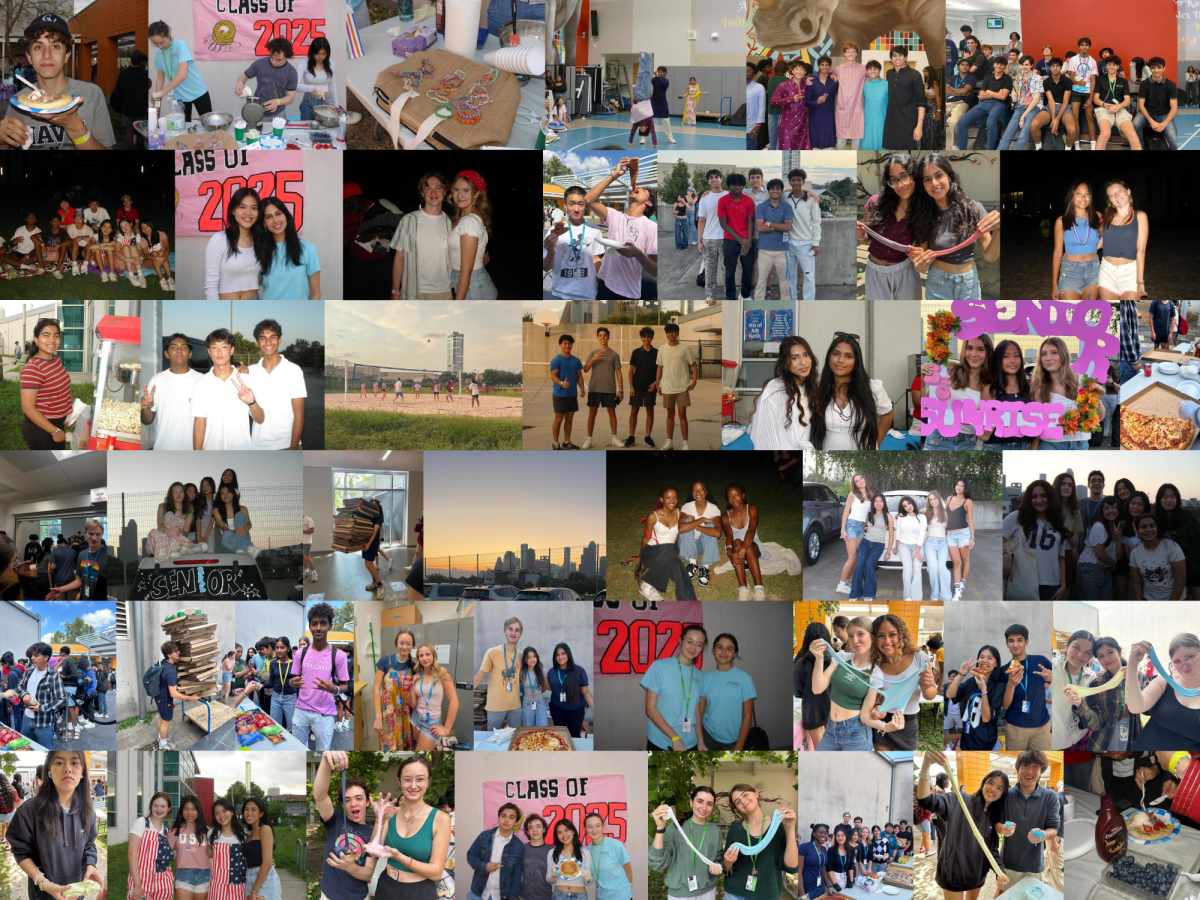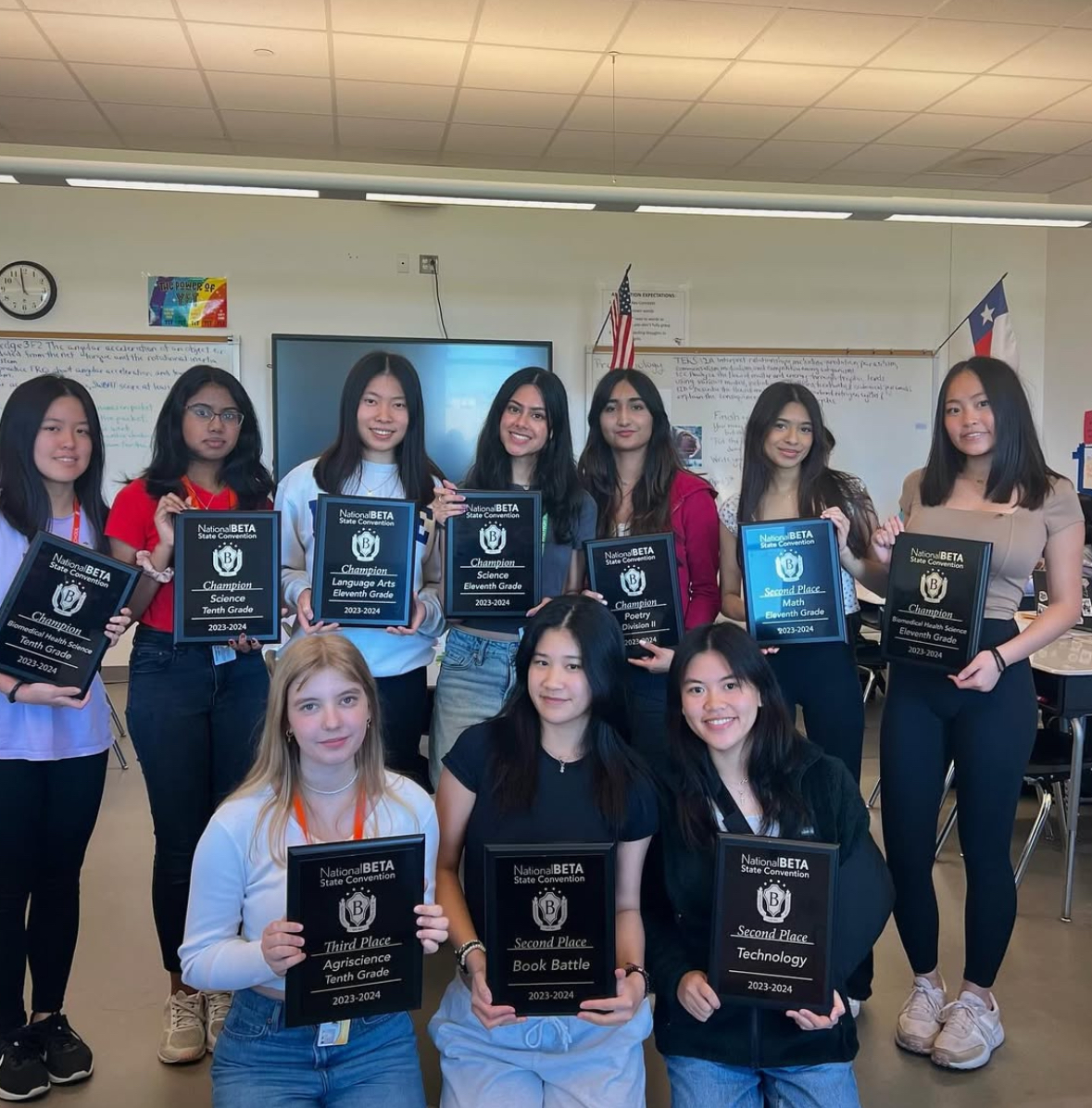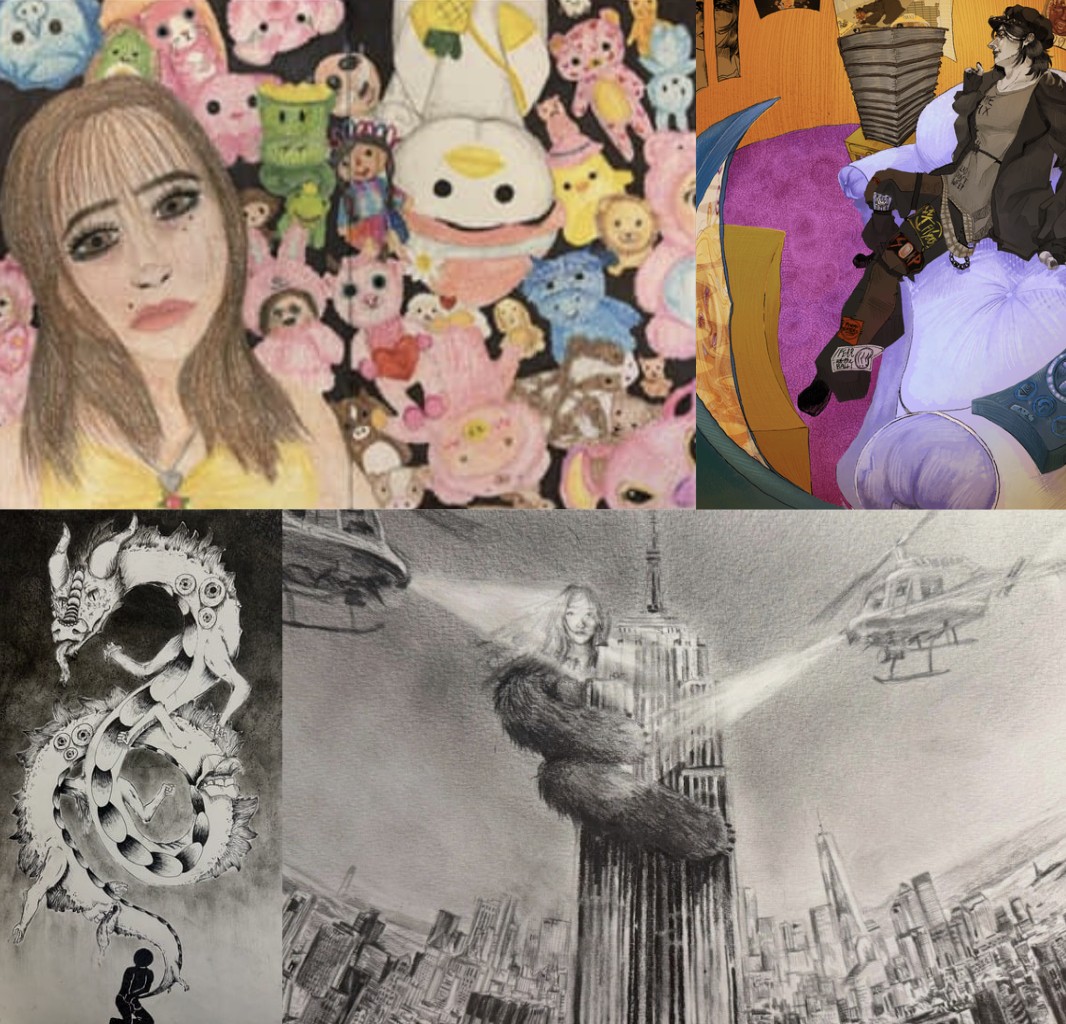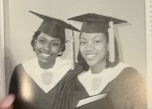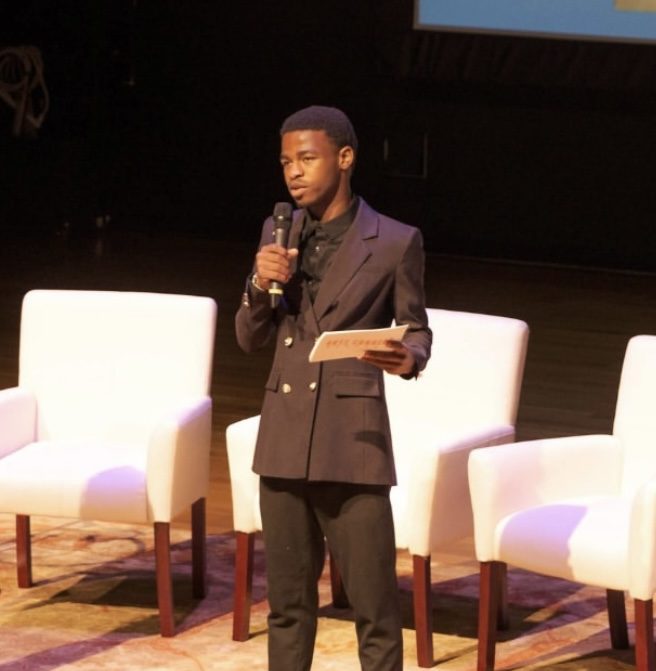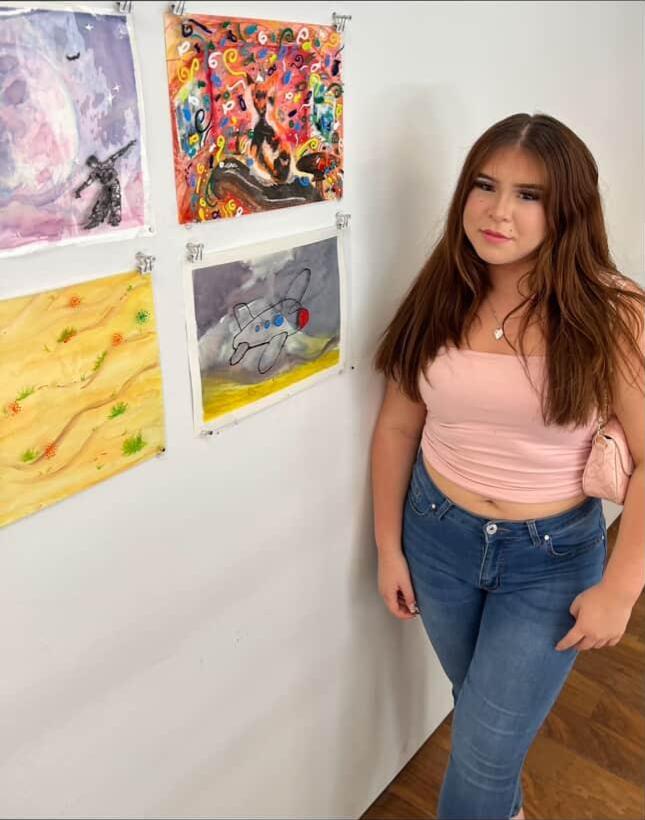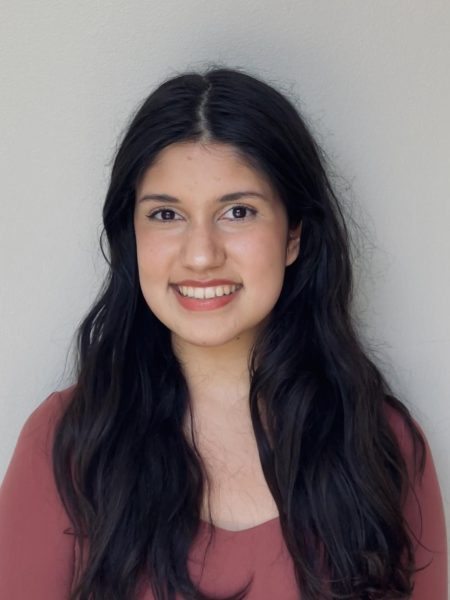A simple google search about which diseases affect the human population the most would give one some pretty shocking results. And no, it isn’t heart disease.
Eye disease. With hundreds of variants across the globe, eye disease affects close to 2 billion people across the world.
For Junior Ramya Elangovan, this statistic shocked her. So much so, she wanted to continue exploring eye diseases and specifically how those who suffer from them could be helped.
Combining her previous knowledge of technology and science fairs, she decided to create a unique spin on the eye problem – by utilizing the human eye some more.
“We created a web-based application where you can upload a picture of your eye and it gives you the diagnosis of what kind of disease that it has,” Elangovan said.
Beginning their project from August of 2024, Elangovan and freshman Rhea Morani set on a massive experiment with the help of Artificial Intelligence. By using existing AI models, they were able to feed data and expand on the impact of their project.
“Originally our project was just focused on one eye disease…but then we thought if AI could accurately diagnose [diseases] why not try it for more diseases? We kept testing different diseases and we got to 30 different diseases,” Elganovan shared.
The duo started off their project slowly, but eventually ended up working countless hours on their product – constantly researching, testing, and experimenting.
“My entire winter break was devoted to that. I would spend the majority of weekends working on the project and then try to rush in school work towards the end,” Elangovan laughed.
Morani, who not only balanced the project but also freshman year at CVHS encountered some challenge along the way.
“I consistently tried to do a few hours of the project after school every day, after finishing schoolwork,” Morani said.
Elangovan shares a similar sentiment, admitting that she learned to balance things properly and use her time effectively.
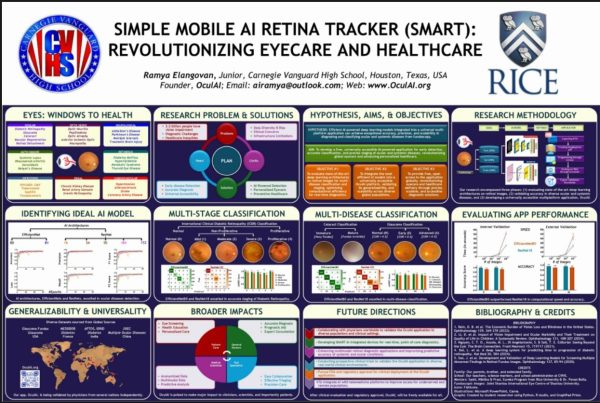
“The whole experience was a good type of stress for me,” she said.
Although they received some initial mentorship at first, they did the majority of the project on their own.
“We did most of our learning on Coursera as well as YouTube tutorials. A lot of it was trial and error,” Elangovan said.
Working in a pair is no easy task, but the girls found a way to keep each other accountable and continue to meet in a timely and productive manner.
“We would meet over zoom once or twice every week to update progress…through that we ended up helping each other,” exclaimed Morani.
At the end of their project, they counted about 300 experiments they ran with their model.
Their perseverance shone as they entered the Science and Engineering fair of Houston with the goals to simply showcase everything they have done.
“I felt relaxed during the competition, because we had prepared so much. The competition requires you to stand for around 6 hours and wait for judges to come up to you so we kept rehearsing and rehearsing until it was second nature,” Morani said.
Apart from their time spent researching, the duo also enjoyed other hobbies in their life.
“I enjoy visual arts and tennis. This year I started robotics,” Morani said. “Since this year I’ve kind of slowed down, but I still really enjoy it.”
Elangovan, on the other hand, is a chess fan and also enjoys mentoring children in the spelling bee.
“I did the spelling bee when I was younger, so now I mentor little kids and it’s the highlight of my week,” she expressed.
While their research and personal interests may not seem to coincide on the surface level, Morani admits that she utilizes her creative brain to think of solutions within their project.
The two girls continue to make advancements with their research long after their competition – and they hope to impact people’s lives.
“We are collaborating with physicians from 8 different countries and they are testing our product in clinical trials to see how it would perform in the real world,” Elangovan said.
For those who want to pursue research, Elangovan and Morani leave advice.
“Find something you’re passionate about, something that motivates you to act. Oh, and don’t be afraid to read actual [research] papers,” Elangovan said.


